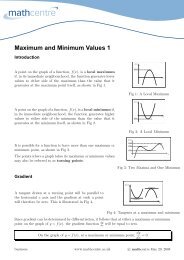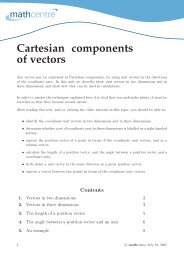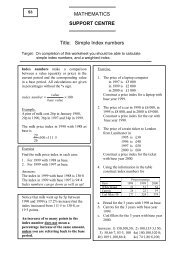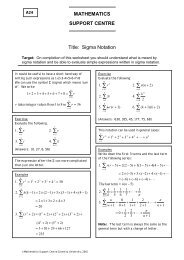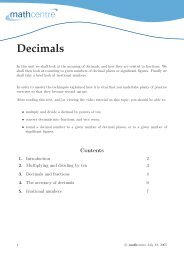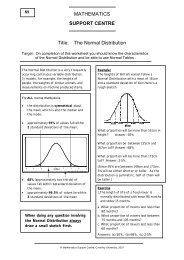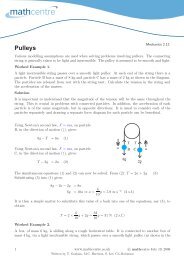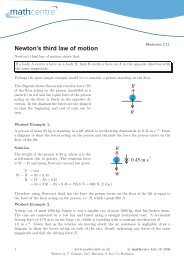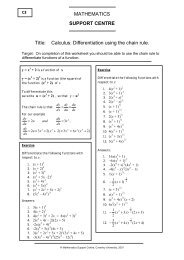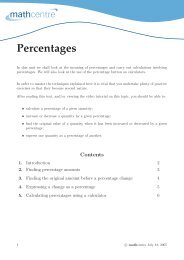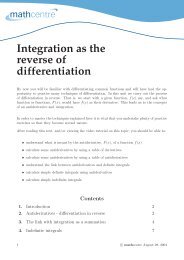Sigma notation - Mathcentre
Sigma notation - Mathcentre
Sigma notation - Mathcentre
Create successful ePaper yourself
Turn your PDF publications into a flip-book with our unique Google optimized e-Paper software.
1. Introduction<br />
<strong>Sigma</strong> <strong>notation</strong> is a concise and convenient way to represent long sums. For example, we often<br />
wish to sum a number of terms such as<br />
or<br />
1 + 2 + 3 + 4 + 5<br />
1 + 4 + 9 + 16 + 25 + 36<br />
where there is an obvious pattern to the numbers involved. The first of these is the sum of<br />
the first five whole numbers, and the second is the sum of the first six square numbers. More<br />
generally, if we take a sequence of numbers u 1 , u 2 , u 3 , . . .,u n then we can write the sum of these<br />
numbers as<br />
u 1 + u 2 + u 3 + . . . + u n .<br />
A shorter way of writing this is to let u r represent the general term of the sequence and put<br />
n∑<br />
u r .<br />
r=1<br />
Here, the symbol Σ is the Greek capital letter <strong>Sigma</strong> corresponding to our letter ‘S’, and refers<br />
to the initial letter of the word ‘Sum’. So this expression means the sum of all the terms u r<br />
where r takes the values from 1 to n. We can also write<br />
b∑<br />
r=a<br />
to mean the sum of all the terms u r where r takes the values from a to b. In such a sum, a is<br />
called the lower limit and b the upper limit.<br />
u r<br />
Key Point<br />
The sum u 1 + u 2 + u 3 + . . . + u n is written in sigma <strong>notation</strong> as<br />
n∑<br />
u r .<br />
r=1<br />
c○ mathcentre July 18, 2005 2



